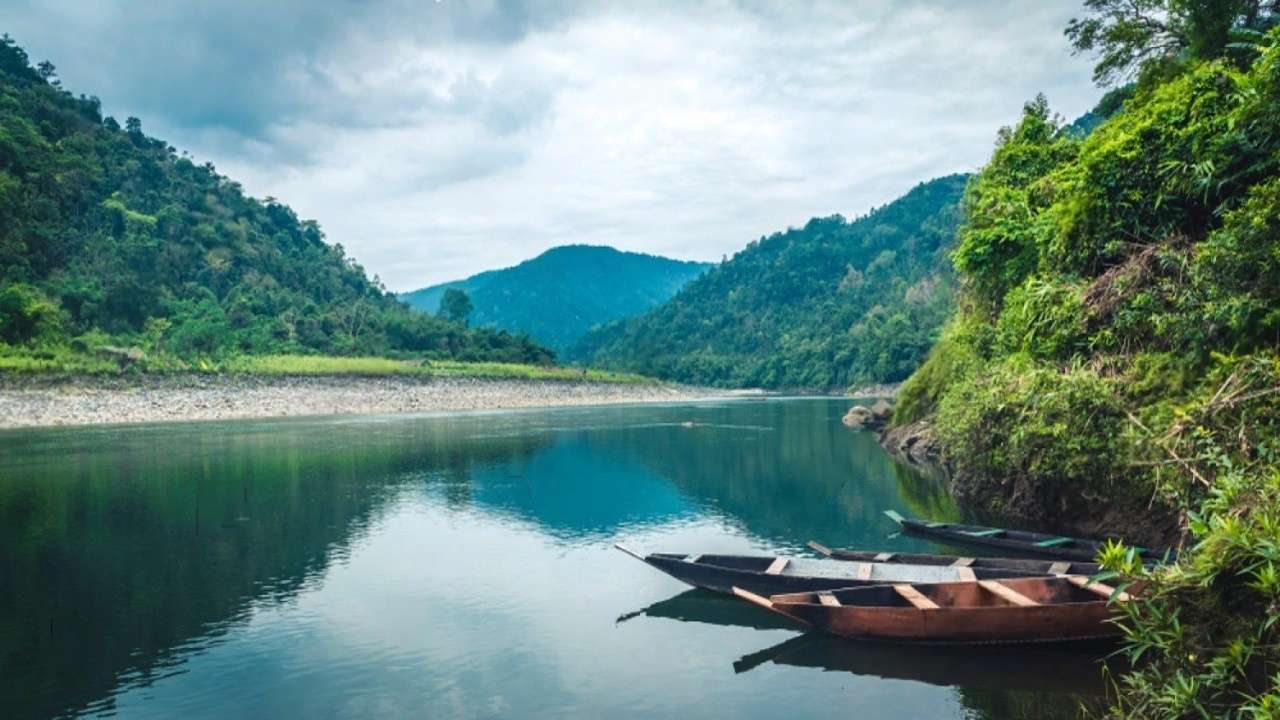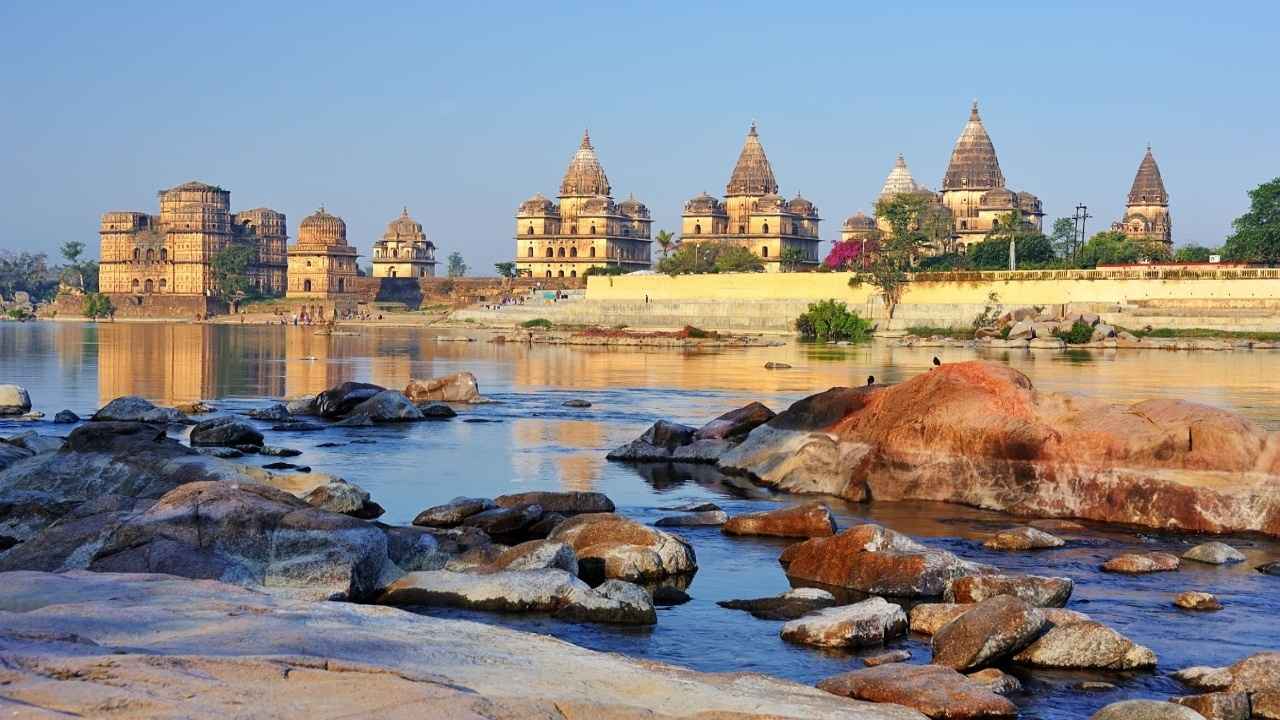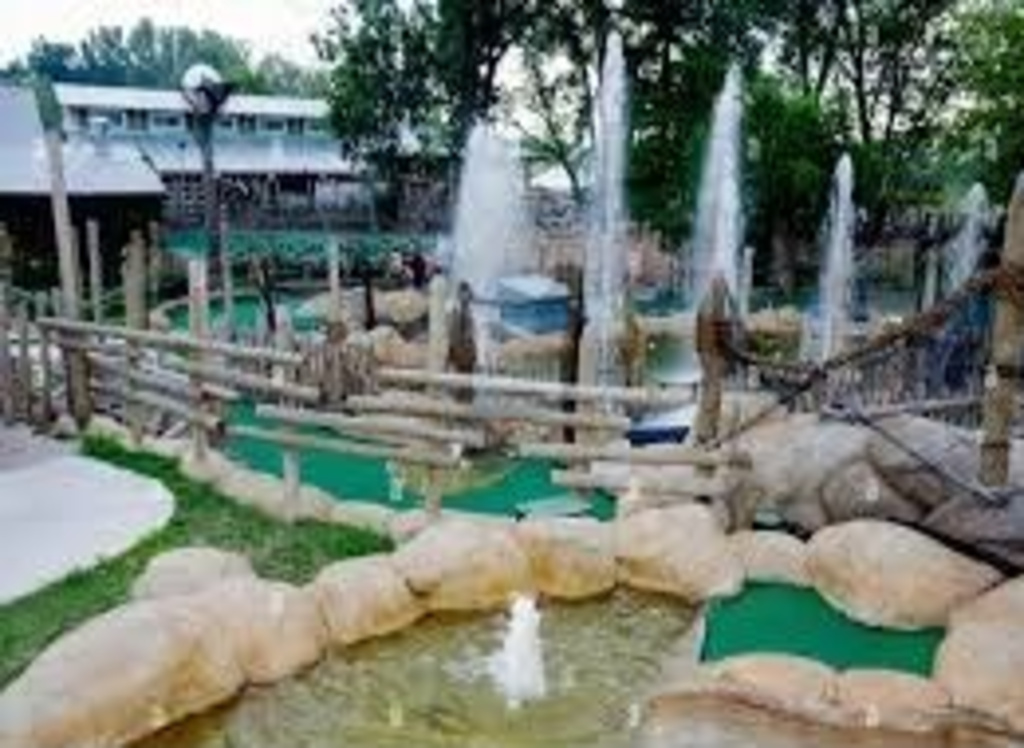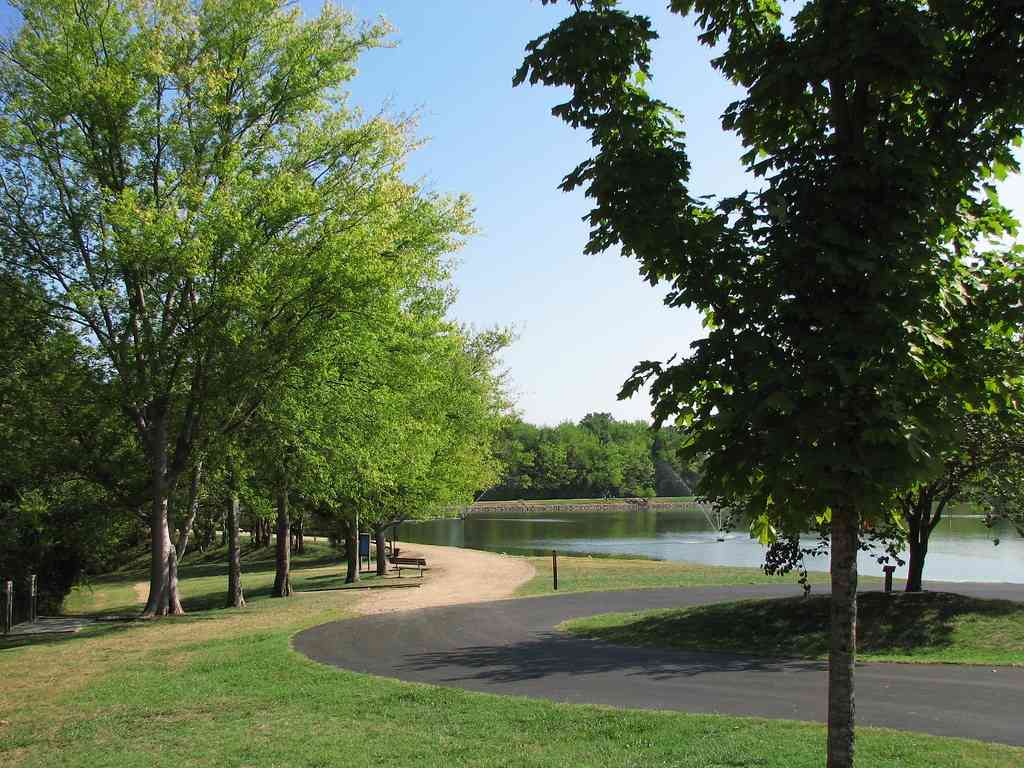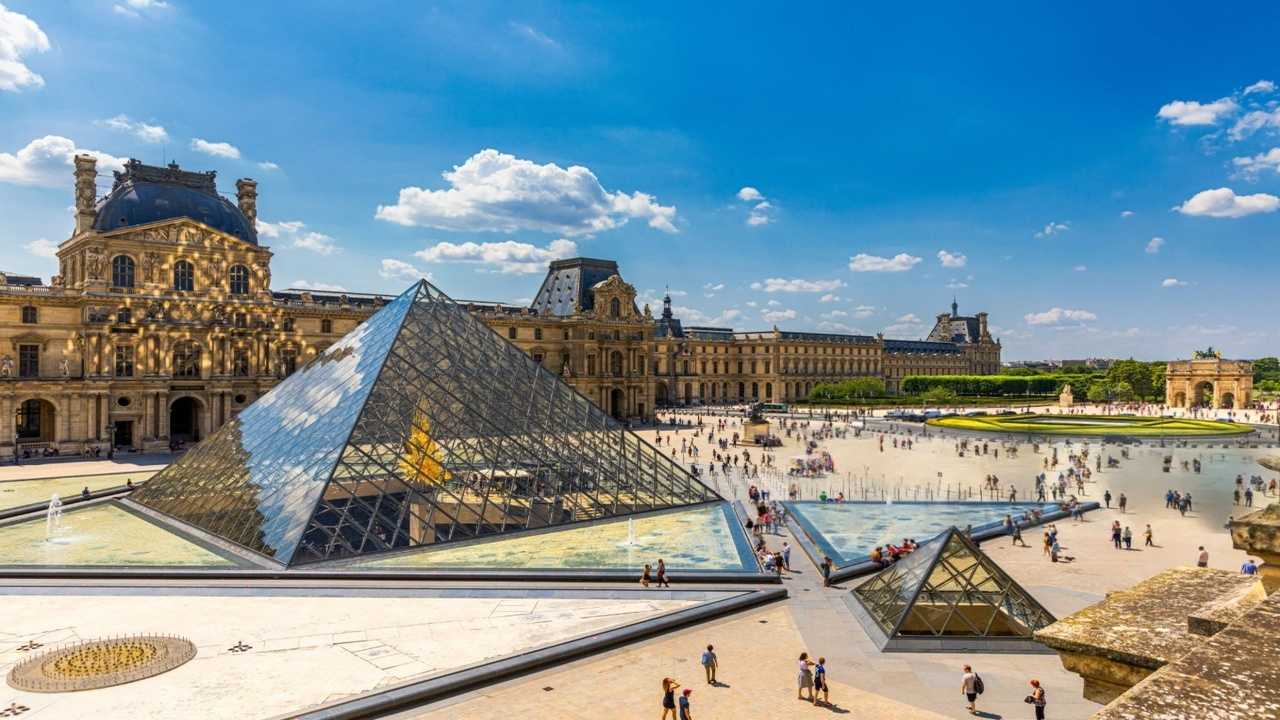
India, the land of colors, cultures, and contradictions, is a paradise for travelers seeking a vibrant and diverse experience. From the snow-capped peaks of the Himalayas to the tranquil backwaters of Kerala, this South Asian country has something for everyone. Let’s explore some of the best travel places in India that you should consider for your next adventure.
Popular Tourist Attractions in India
India, blessed with its historical, cultural, and natural heritage, boasts of many famous and visited places all around the globe. From historic monuments to natural wonders, here’s an overview of some of the must-visit sites in India.
Taj Mahal, Agra

The Taj Mahal, an image of affection and one of the world’s global wonders, is a piece of architectural elegance that enchants the onlooker with its white marble brilliance and cutting.
Varanasi, Uttar Pradesh
Often referred to as the oldest city in the world, Varanasi is a spiritual city located by the Ganges River which is perfect for tourism. Here tourists can see incredible Ganga Aarti and visit numerous temples and ghats.
Kerala Backwaters
Kerala’s backwaters assure a peaceful holiday with rice paddies and coconut lagoons, a comfortable houseboat for an overnight stay, and a Ride.
Goa Beaches
Goa has golden sand, blue water, and lively beachside kiosks; thus the place is ideal for sunbathing, water sports, and night binging, which make it a favorite among beach lovers and party freaks.
Darjeeling, West Bengal
Darjeeling is situated in the lap of the snow-clad Nepalese Himalayas. It is famous for its tea gardens, toy train which passes through the scenic Bengal Saptagram, and majestic view of Kanchenjunga.
Mumbai, Maharashtra
Mumbai is one of the most vibrant cities in India. It includes colonial buildings, crowded bazaars, the movie industry – Bollywood, and the significant attractions, the Gateway of India and Marine Drive.
Rishikesh, Uttarakhand
Often referred to as the ‘Yoga Capital of the World’, Rishikesh is a peaceful pilgrim town for those looking to meditate or take Yoga and Ayurveda courses, go for a pleasant river rafting in Ganga, or go trekking.
Jaisalmer, Rajasthan
The structure of yellow sandstone buildings, the fortress, stately houses, and a ride on the camels in the Thar desert gives the royal feel of the desert state of Rajasthan at Jaisalmer also known as the ‘Golden City’.
Amritsar, Punjab
The Golden Temple is the focal point of Sikh pilgrimage, and Amritsar is also known for having the Golden Temple. The free vegetarian langar marks the entrance to a Sikh shrine, the retreat ceremony at Wagah Border, and the martyrs’ holy monument, Jallianwala Bagh.
North India: From the Majestic Himalayas to the Vibrant Cities
North India is a rich territory that gives tourists the opportunity to observe the natural beauty of the country as well as appreciate ancient cultures and the marvelous architecture of temples and other religious buildings. From the snow-capped summit of the Himalayas to the crowded historical cities, this part of India is a virtual storehouse of beyond-imagined experiences.
Kashmir: the Paradise on Earth
The beautiful and fearlessly untouched territory of Kashmir is a valley that attracts visitors from all over the world, thanks to its nickname – the “Paradise on Earth. Being home to amazing landscapes, sparkling freshwater bodies, and soaring snowy mountain ranges, Kashmir is every adventurer’s paradise. Kashmir looks lovely all around whether one is sailing on the calm waters of Dal Lake, skiing on the slopes of Gulmarg, or even honeymooning in the beautiful meadows of Pahalgam.
Delhi: The Capital City
Delhi is a very active city, here one can observe perfect symbiosis between ancient and modern architecture. Old and new Delhi; whether it is historical landmarks like the imperial Indian Red Fort museum, street-side bazaar, or contemporary shopping malls, glass, and steel buildings, business towers, and posh multiplexes, all are well developed in Delhi. Lip sympathetic to Delhi, take in the full view of Red Fort, behold the finesse of the Qutub Minar, and walk down the crowded lanes of Chandni Chowk, Delhi’s old street.
Rajasthan: Fort and Palace and Desert Land
Rajasthan is the largest state of India and it has a royal past and sound natural beauty attractive to tourists. Right from the palaces of Jaipur and Jodhpur to the palaces of Udaipur and Jaisalmer, the architectural monarchy of Rajasthan is nothing less than an open text of bravery and royalty. Discover the beauty of the Thar desert and Rajasthani culture, which are brightly represented by the showings of the local Rajputs.
South India: Tropical Landscapes and Serene Beaches
Tropical exotic beauty, green landscapes, and serene beaches of South India are what one can dream of to get away from the hustle and bustle of life. This region starts from Kerala – the state famous for its green terrains and continues with the state that boasts of its golden sand – Goa.
Kerala: Backwaters, Tea Plantations, and Ayurvedic Treatments
Kerala is much favored by lovers of natural beauty, ayurveda, and culture. Kerala backwaters consist of a series of interconnected lagoons and charming canals, located in a breathtaking environment of coconut groves and rustic villages which the films’ directors successfully captured. Go for a ride on a Shikara over the Dal, watch the sunset at Alleppey, and indulge in Kerala hospitality cuisine for a memorable trip.
Munnar and Wayanad offer a pollution-free atmosphere with the rolling mountains blanketed with tea gardens, mists, and a bracing climate which make for a perfect holiday in the lap of nature. Walk through the famous tea gardens, go for a nature trail in the lush green meadows, relax, and get pampered at the Ayurveda spa in pure luxury.
Goa: Sun, Sand, and Parties
Goa is a state on the western coast of India, consisting of a picturesque strip of improvement with beautiful beaches, active nightlife, and a cheaper and relaxed environment that draws tourists from all over the world. Sprawling sunny lands at Calangute, Palolem, or Anjuna Beach for a sun bath water sports, wild parties on the beach, or in any of the happening discos, Goa presents abundant distinctive holiday options to travelers.
You can visit the captured churches of Old Goa, taste delightful seafood at the shoreside eating joints, and see the live portrait of the blended cultures of Indian and Portuguese, best seen in the village of Goa.
East India: Unexplored Treasures and Ancient Heritage
The region of East India holds several potential that include uncovered archeological sites and antique structures, cultural sites festivals, and traditions that would engage any tourist who is interested in getting a first-hand experience of historical and cultural discovery in India.
West Bengal: Kolkata, Darjeeling, and the Sundarbans
West Bengal, the cultural heart of East India, is home to the vibrant city of Kolkata, known for its colonial architecture, artisanal craftsmanship, and literary heritage. Explore the bustling streets of Park Street, visit the iconic Howrah Bridge, and savor the delectable street food at New Market to immerse yourself in the charm of the “City of Joy.”
West India: Heritage Sites and Culinary Delights
West India is a treasure trove of heritage sites, culinary delights, and vibrant culture that showcase the rich tapestry of India’s history and gastronomy. From the bustling metropolis of Mumbai to the sun-kissed beaches of Goa and the historical monuments of Maharashtra, West India offers a plethora of experiences for travelers seeking to unravel its diverse charms.
Maharashtra: Mumbai, Goa, and Historical Monuments
Maharashtra, the cultural melting pot of West India, is home to the bustling city of Mumbai, India’s financial capital, and a vibrant hub of arts, entertainment, and culinary delights. Explore the historic landmarks of Gateway of India, Marine Drive, and Elephanta Caves, sample the lip-smacking street food at Juhu Beach, and soak in the electrifying energy of this cosmopolitan metropolis.
You can explore the historical monuments of Maharashtra, including the magnificent Ajanta and Ellora Caves, the majestic forts of Raigad and Pune, and the UNESCO World Heritage sites of Chhatrapati Shivaji Terminus and Elephanta Caves. Immerse yourself in the architectural splendor, cultural heritage, and spiritual significance of these ancient marvels that narrate the tales of Maharashtra’s glorious past.
Tips for Traveling in India
Traveling in India can be a rewarding and enriching experience, but it’s essential to be well-prepared and aware of cultural practices, and transportation options. Here are some tips to help make your journey in India smooth and memorable:
Cultural Etiquette
- Respect Local Customs: India is a diverse country with varying cultural norms and traditions. Be respectful of local customs, traditions, and religious practices.
- Dress Modestly: In many parts of India, especially religious sites, it is advisable to dress modestly. Cover your shoulders and avoid wearing revealing clothing.
- Greetings: The common greeting in India is a “Namaste” with a slight bow. Handshakes are also acceptable in more formal settings.
- Eating Etiquette: When dining with your hands, use your right hand to eat, as the left hand is considered unclean. In some regions, it’s customary to share food from a common plate.
- Footwear: Take off your shoes before entering religious sites and homes. It’s also common practice to remove your shoes in some restaurants and shops.
Transportation
- Public Transport: India has an extensive network of trains and buses that connect major cities and towns. Trains are a popular and affordable mode of transport, but book your tickets in advance to secure a seat.
- Taxis and Auto Rickshaws: Negotiate the price before boarding a taxi or auto-rickshaw. Use apps like Uber or Ola for convenient and safe transportation in cities.
- Renting a Car: If you prefer self-driving, consider renting a car with a driver. Indian roads can be chaotic, and having a local driver can ensure a smoother journey.
- Domestic Flights: For longer distances, consider domestic flights to save time. Book tickets in advance for better deals.
Conclusion
India is a kaleidoscope of experiences, offering a unique blend of history, culture, nature, and adventure at every turn. South Asia has a significant number of the best travel places in India. Whether you’re exploring the snow-clad mountains of the north, relaxing on the sun-kissed beaches of the south, or immersing yourself in the vibrant cities and diverse landscapes, this country has something for every traveler. Pack your bags, set out on a journey of discovery, and let India enchant you with its myriad wonders.
For more information about exciting travel destinations and expert tips, visit my website, Heaven Leads. Discover stunning locations, travel guides, and insider advice to help you plan your perfect getaway. Whether you’re seeking adventure, relaxation, or cultural experiences, my website provides everything you need to make your travels unforgettable.
FAQs
What is the best time to visit India?
The best time to visit India depends on the region you plan to explore. Generally, the winter months (October to March) are ideal for most parts of the country, as the weather is pleasant and conducive for traveling. However, specific regions like the Himalayas are best visited during the summer months (April to June).
Are there any cultural festivals or events worth attending in India?
India is known for its vibrant festivals and cultural celebrations throughout the year. Some of the must-attend festivals include Diwali (Festival of Lights), Holi (Festival of Colors), Navratri, Durga Puja, and Goa Carnival.
Do I need a visa to travel to India?
Yes, travelers from most countries need a visa to enter India. You can apply for an e-visa or a regular visa through the official Indian government website or authorized visa service providers.
Is it safe for solo female travelers in India?
While India is generally safe for travelers, solo female travelers should take extra precautions. It’s advisable to dress modestly, avoid traveling alone at night, and stay in reputable accommodations.
How can I experience the local cuisine in India?
To experience the diverse and flavorful cuisine of India, explore local markets, street food stalls, and traditional restaurants. Sample regional delicacies like chaat, biryani, dosas, and street snacks.

